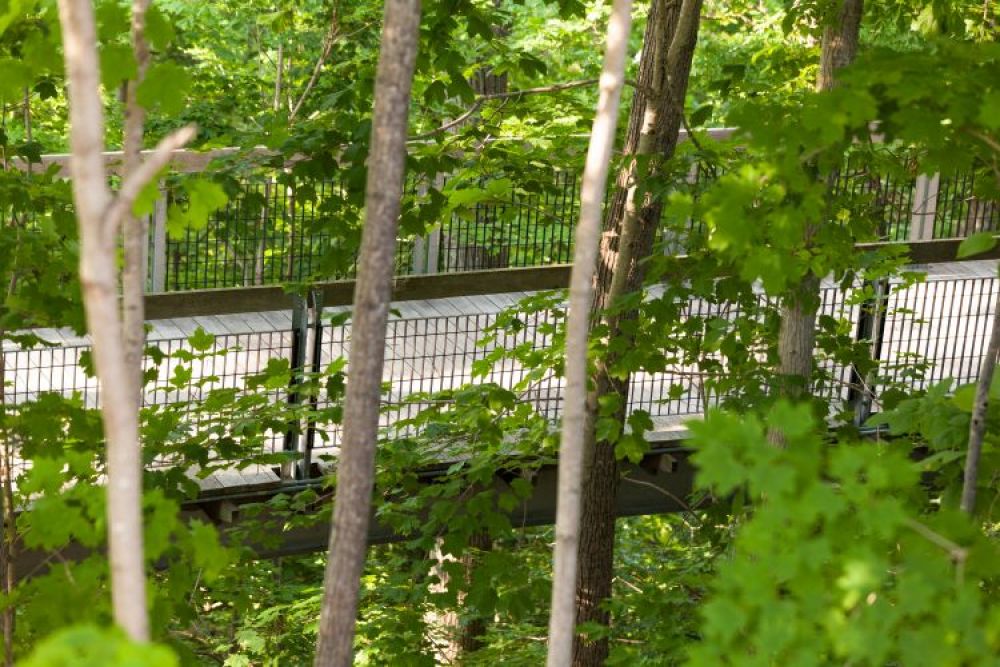纳尔逊·伯德·沃尔茨(Nelson Byrd Woltz)从设计过程开始就与VMDO建筑师合作,将这个新的80,000sf建筑整合到一个校园内,这个建筑面向国家历史名胜,以及距建筑工地100英尺的脆弱的溪谷。 Commons项目将校园北侧从停车场和服务驱动器的后院转变为作为第二个前沿的行人环境,并将校园重新连接到森林覆盖的河谷,这是土着雪兰莪河谷景观的遗迹。服务区淹没在地下。该场地计划采用材料语言来区分新建筑的校园/城市和树林/自然方面。校园层面的步道和墙壁主要是砖和混凝土,典型的现有校园材料。蓝宝石和当地石灰岩主导着建筑物树木茂盛的一些现场材料调色板,参考了地质学在塑造区域景观和校园所在山脊的重要性。高架的木板路漂浮在树冠上,将建筑物连接到校园的主停车场。建筑东端的一个露天剧场座位150人,创造了一个重要的占地面积,在校园和树林之间进行调停,为超越的独特山脉提供了景观。
Nelson Byrd Woltz collaborated with VMDO Architects from the outset of the design process to integrate this new 80,000sf building into the fabric of a campus flanked by a National Historic Landmark and a fragile stream valley 100 feet below the building site. The Commons project transforms the north side of campus from a backyard of parking lots and service drives to a pedestrian environment that serves as a second front and reconnects the campus to the wooded stream valley, a remnant of the indigenous Shenandoah Valley landscape. The service area is submerged underground. The site plan employs a language of materials to distinguish between the campus/urban and wooded/natural sides of the new building. Walks and walls at the campus level are primarily brick and concrete, typical of the existing campus materials. Bluestone and local limestone dominate the site material palette on the wooded side of the building, making reference to the importance of geology in shaping the regional landscape and the ridge on which the campus sits. An elevated boardwalk floats through the tree canopy, connecting the building to the primary parking area for the campus. An amphitheater at the east end of the building seats 150 people and creates a significant occupiable place that mediates between the campus and the woods, affording views to the distinctive mountains beyond.
















